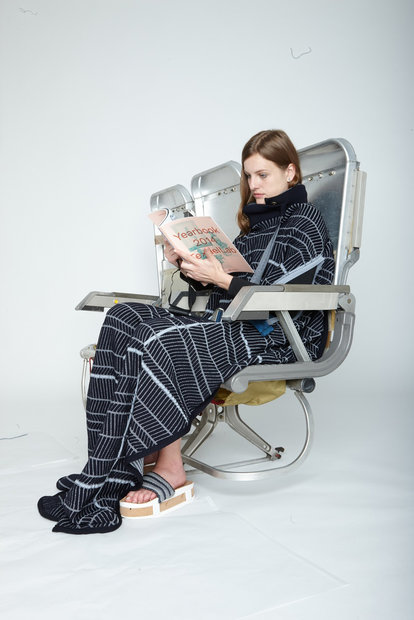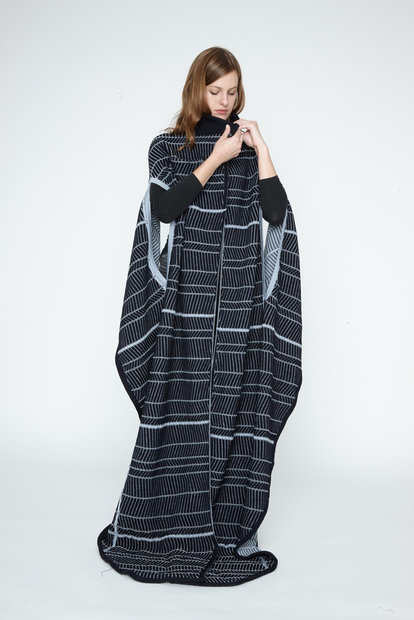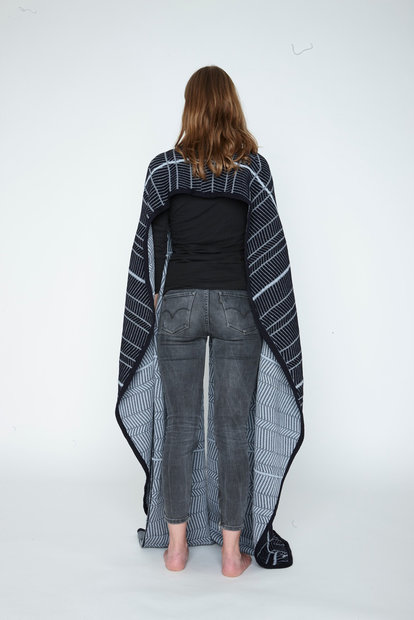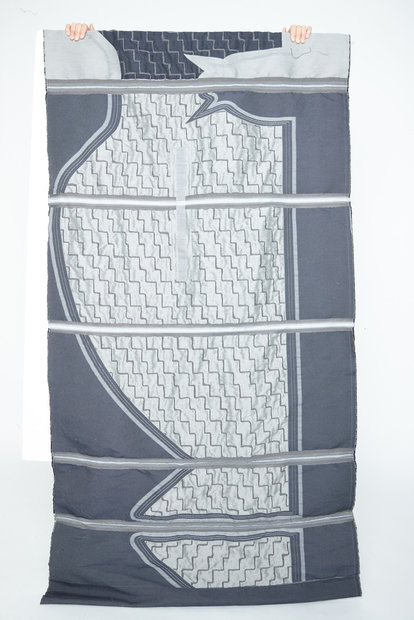

© Natalie Peter


knitted, frontside (© Natalie Peter)


woven, frontside (© Natalie Peter)


knitted, backside (© Natalie Peter)


pattern (© Natalie Peter)
Feelflight is a set of interrelated physical and digital products intended for the useful expansion of the existing range of services for passengers on long-haul flights and to increase their well-being on board.
The focus of the study was to develop a passenger blanket and to rework its shape as well as its textile functions. This is supplemented by movement-stimulating slippers and tailored offers of both products in the infotainment system.
The usgae context of long-haul passenger flights is challenging in two ways: on the one hand, the environment in which products can be used and placed is extremely regulated and optimized by the airlines in terms of weight reduction, safety and manageability, and on the other hand, users or passengers usually experience long-haul flights as physically and mentally stressful.
The shape of the passenger blanket, traditionally designed as a rectangular scarf, was refined into a cape that the passenger can “wear.” The back section was deliberately omitted as it is not necessary due to the seated position and it also enables passengers to “pull on” the blanket while sitting. A neck pillow can also be secured into the collar. Two slits on the front allow passengers to freely maneuver their hands and allow the seat belt to be fastened over it: by keeping the seat belt visible over the blanket for flight attendants, sleeping passengers do not have to be woken up in the event of turbulence.
Passengers can activate heat modules via their screen interfaces, which can be inserted in specially placed pockets of the cape. They enable the blanket to be "heat-packed" regardless of their seating position in the aircraft. Likewise, the slippers, which can be worn on board not only for their comfort, can be activated via the inflight menu. The slippers become controllers and the passenger is directly or indirectly stimulated to move the feet: for example, simple games such as Tetris or menu navigation can be carried out.
In addition to the functional features, particular attention was paid to the textile properties of the passenger blanket. It consists of wool and algae or bamboo carbon fibers, which are suitable for this context due to their natural properties. Natalie Peter pursued two textile production strategies in parallel. A woven and a knitted prototype were created, each with slightly different properties, which were presented as comparative models.
As a contribution to a competition launched by Lufthansa, this concept was tested as part of a Lufthansa long-haul test flight in and feedback was obtained from the passengers.
Tutors: Prof. Volker Albus , Prof. Dr. Claus Molgaard